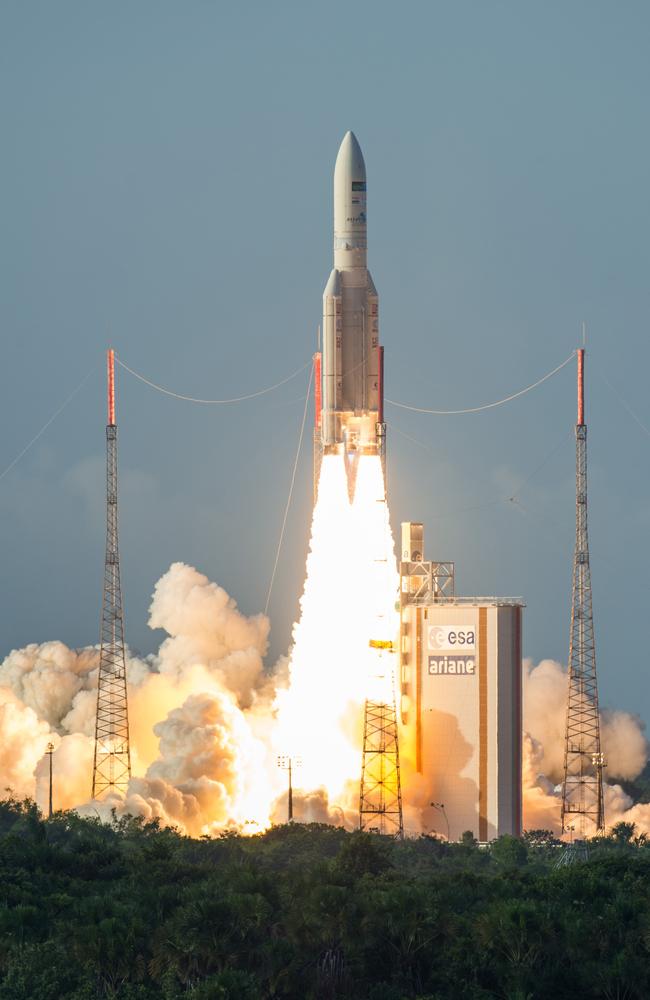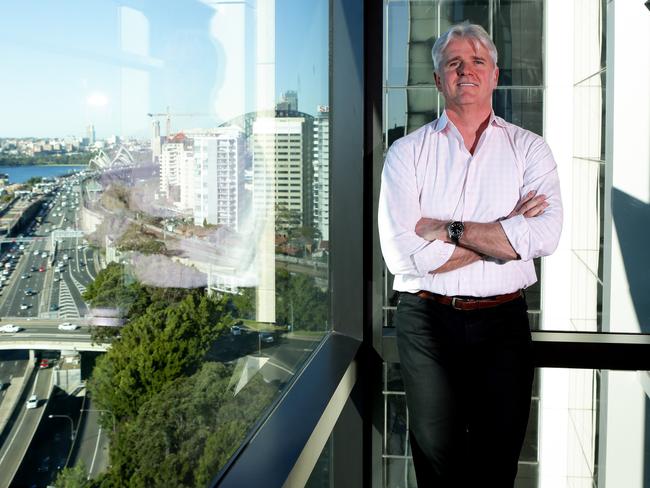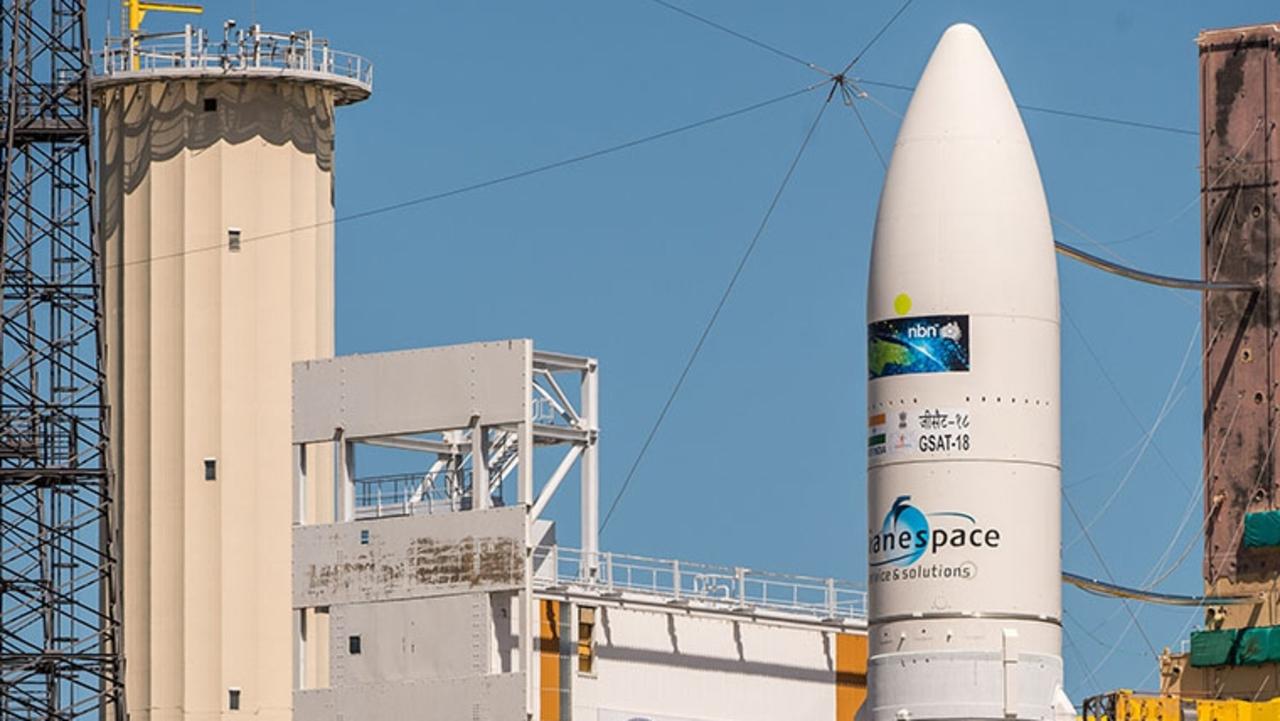NBN CEO Bill Morrow says the rollout is picking up momentum and defying the naysayers
NBN chief executive officer Bill Morrow is asked what is the reaction he gets at barbecues. He explains it depends where the party is.

- NBN boss Morrow now gets $3.6 million per annum
- NBN ditches cable upgrades so connections to slow
- Second NBN satellite to take off in South America
- NBN abandons the Optus HFC network
IT’S the Australian litmus test. If you want to know what people think of you, go to a barbecue.
A Sixty Minutes producer, back in the day, would have been boasting over the snags about their big picture. Now, they’re more likely to be hiding under the table and waiting to become everybody’s punch line.
NBN chief executive officer Bill Morrow says the reaction he gets at barbecues depends on where the barbecue is and who turns up.
“If you had asked me two-and-a-half or three years ago what that was like, I would have said the majority of the people out there were saying ‘this is ridiculous, we’re spending so much money and it’s taking so long, it’s a political angst that I don’t understand and the politicians are just throwing barbs at each other,” he says.
“I think for the most part people are starting to say ‘all right NBN is picking up some momentum’,” he adds, sitting in the office of SSL, the world’s biggest commercial satellite maker, ahead of the launch of the NBN Sky Muster II satellite this week that is part of the system that’s connected regional Australians to the wider world.

“With basically one in four people able to order the NBN and 1.3 million people who have it, there is somebody in that circle around the barbecue who say they have it, and the majority of those people who say its fantastic.”
But not everyone wants to bash his ear with praise over the bangers. Another section of the community, possibly a very large section, just don’t get the NBN. The political debate has left us confused and the deeper the dive, the more the technology befuddles things.
And there is a third camp, and that’s the camp of people who think the NBN is deeply flawed. We are building a national network that uses an ageing copper network to provide that last vital connection from the footpath, or community node, to the house.
There are emerging technologies that the NBN is adopting that means the bandwidth of that copper is faster than it used to be. But despite all that, copper is the network’s weakest link and eventually it will have to go. Even the head of the NBN says eventually the copper will need to be replaced although Morrow says that will not cost the taxpayers extra because by that time the NBN will fund it through debt or through the money it generates.
Rather than bemoan the split in opinion that greets the NBN roll out, Morrow is glad that at least things have changed.
“Those three different camps are separate and distinct but without a doubt we see evidence that
the conversation is beginning to change and it is beginning to be far more positive than what it was a couple of years ago,” he said.
Who are the naysayers bagging our NBN? They’re people who really believe in a broadband network.
Professor Rod Tucker, from the University of Melbourne, was one of the five leading academics the Select Senate Committee on the National Broadband Network sought out for a view on the NBN
“All of this points in one direction: Australia’s Fibre-to-the-node network will be obsolete by the time it is rolled out and will not be able to deliver the speeds that will be needed in the future,” says the man who is Director of the Institute for a Broadband-Enabled Society.
Laure Patton, CEO of the lobby group Internet Australia, sums it up as this: “The NBN is doing a very good job of rolling out an inferior broadband network.”
“They’re rolling out a network that is reliant on very, very ageing copper wires at a time when the rest of the world is moving to fibre,” Patton says.
“The problem is not just the fact that it needs to be replaced, but they’re not including the costs of doing that in their overall budget.”
“When people say it’s going to cost X to build the NBN, well it’s going to cost X plus Y because we’re going to have to rebuild it in 10 or 15 years.
“I don’t think that consumers understand it at all. There’s a serious lack of understanding and that’s one of the reasons that people aren’t bothering. There’s massive confusion is the message that we’re getting back.”
So where is the NBN at?
There are 3.1 million residences ready for connection and 1.3 million who have signed up.
That gap between the two is due partly on people not being convinced they need the NBN and partly on the delay between a service being switched on and internet providers targeting the new suburbs.
What will it cost? The answer is still “it depends”, although it’s not as vague as it once was.
It will cost the Australian tax payer $29.5 billion, and the NBN will have to raise about $20 million in debt which it will start to pay off about 2022.
At one stage, the NBN forecast a cost ranging from $45 to $56 billion but having locked in contracts for suppliers and equipment providers, that’s come down to a top limit of $54 billion.
“We put a range out there that got a lot of negative criticism but it was the only way I felt comfortable,” Morrow says. When you’re building a broadband network there are still lots of unknowns.
Even some critics who rightly complain about the weak link of copper in the NBN admit, to a degree, that it’s a mute point unless the government changes its plan. There was a choice at the last election and, although the NBN was not a key election issue, the country choose a cheaper, quicker network with copper the last link.
Morrow explains the difference between the first vision of a fully fibre NBN to the current fibre-to-the-node network as being a difference in perception of demand.
“The former government felt that the demand was going to be here much sooner so therefore lets build glass (fibre) to everyone’s home right now,” Morrow says.
“The current government says ‘I don’t believe that the demand is here so why spend the money and take longer to do it when we can build this network quicker, faster, cheaper and if that demand comes then NBN has thought about an upgrade path for everyone of these to be able to use it then’.
“The one thing that I can say with certainty is that by using copper it’s a hell of a lot faster.”
Morrow is connected to the NBN at his home and gets a broadband service that has a maximum speed of 50Mbps. He calls it “ample”.
“Today, that’s all I really need but if you think about it in the future, if you think about the internet of things you can see where my 50 may not be enough and I need to be able to go up to 100 and maybe 200 and maybe ultimately to a 1 Gbps service,” Morrow says.
“As I’m willing to pay a little bit more money for that, the economics needs to change and the NBN needs to push fibre closer to my house.”
And Australians will demand more bandwidth in the future. Telsyte released a report last year showing the average number of connected devices in Australian homes is predicted to more than triple from eight to 29 by 2020. At peak times, Australian homes will have 12 simultaneous applications connected to the internet over multiple devices in 2020, up from eight now.

How does Australia compare to the rest of the world? Badly and sliding down the list all the time.
A few years ago, we were sitting in about 30th position. In the most recent comparison by Akamai, we’re down to 56.
Morrow says the main problem at this stage of the NBN roll out is that most of Australia is still using slower ADSL. Another problem is that the Akamai ranking measures speed of traffic, but given many people signing up to the NBN opt for a cheaper plan rather than maximum speed, he says the ranking doesn’t give a full picture of our potential speed.
When the NBN is finished, and the ADSL days are over, Morrow says we’ll be climbing up that Akamai ranking again and, if you were to measure speed capability, we will be in the top five.
But back to the barbecue, and that group of people who continue to bag the NBN because of the copper, or its performance, or because it’s still not available in their street.
Why would you want to run the NBN? Morrow says it’s simple: “I believe in so much what the end state is going to do for the nation”.
Morrow describes a connected Australia as being one with better health and education services for all, better networks for entrepreneurs pitching to a global market and a better economy.
“We’re going to see a massive shift. The sooner we can get everybody connected, the more we’re going to start to see the benefits that are going to emerge from that,” he says.
“I don’t even think that we can imagine it as much as its going to happen. That’s the power of what a fully connected country can be.
“We will be the first fully connected continent to have broadband by 2020. No other countries, other than the small city-like type countries, have said I’m going to put broadband in every house.
“We don’t realise how lucky we are yet.”
THE NBN TODAY IN BITE-SIZED PIECES
How much will it cost?:
$49 billion in peak funding.
How many people are on the NBN?:
3.1 million homes and businesses ready for connection and 1.3 million who have signed up. Nearly 1 in 4 homes are able to order NBN now, and by June 2018 that will reach 3 in 4. The target is 8 million premises by 2020. There are now 13,000 activations a week.
What is the goal?:
To provide a broadband service of at least 25Mbps to every Australian by 2020.
What speeds will people have?:
People will choose from a range of speed options. Entry level is 12/1 (12Mbps down and 1Mbps up), then speeds increase to basic broadband with 25/5, on to 50/20 for heavier users and up to 100/40 which lets you stream video in 4K and upload large files.
Do I have to be connected to the NBN?:
Everyone who is currently on a fixed-line copper telephone line will eventually be migrated to the NBN. However some people will choose to have just a mobile network service.
Are there economic benefits?:
Melbourne University research forecasts the NBN network will boost the economy 2 per cent a year from 2020.
If we all use the internet through our smartphone, do we need a fixed broadband network?:
Mobile networks are also developing faster internet speeds but have higher costs and are typically used for smaller downloads.
How much data will we use on the NBN?:
The average NBN connected home will use more than 64GB of data every month which equates to streaming more than 9000 minutes of video content.
How much will it cost?:
The NBN is a wholesale supplier to retail service providers, who then offer packages to customers. The good news for customers is that when they are connected to the NBN they potentially can access a much wider ranger of ISPs than currently service their area.



